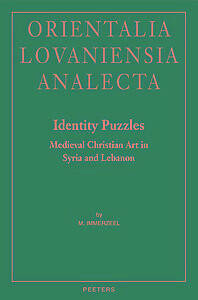
- Afhalen na 1 uur in een winkel met voorraad
- Gratis thuislevering in België vanaf € 30
- Ruim aanbod met 7 miljoen producten
- Afhalen na 1 uur in een winkel met voorraad
- Gratis thuislevering in België vanaf € 30
- Ruim aanbod met 7 miljoen producten
Zoeken
Omschrijving
Numerous churches decorated with medieval wall paintings can be found in Lebanon and Syria, especially in the former Crusader County of Tripoli and the Muslim-controlled Damascus area. In particular the first half of the thirteenth century turned out to be a period of intensive artistic activities. This book addresses the matter of identity formation in the decoration of Maronite, Melkite and Syrian Orthodox churches during this artistic 'Syrian Renaissance', and explores the differences and similarities between the arts of these communities. Attention is given to the interaction between Latins and local Christians, the attribution of works of art to local and Byzantine artists, and the relationship with Islamic art. Furthermore, recent discoveries have revealed that indigenous painters and workshops involved in the embellishment of churches also produced icons which were formerly attributed to Latin artists, thus adding a new dimension to the research on the production of Christian art in the Middle East during the Crusader era.
Specificaties
Betrokkenen
- Auteur(s):
- Uitgeverij:
Inhoud
- Aantal bladzijden:
- 325
- Taal:
- Engels
- Reeks:
- Reeksnummer:
- nr. 184
Eigenschappen
- Productcode (EAN):
- 9789042921498
- Verschijningsdatum:
- 17/11/2009
- Uitvoering:
- Hardcover
- Formaat:
- Genaaid
- Afmetingen:
- 168 mm x 248 mm
- Gewicht:
- 789 g

Alleen bij Standaard Boekhandel
+ 160 punten op je klantenkaart van Standaard Boekhandel
Beoordelingen
We publiceren alleen reviews die voldoen aan de voorwaarden voor reviews. Bekijk onze voorwaarden voor reviews.











